Euphorbia incisa, Mojave spurge
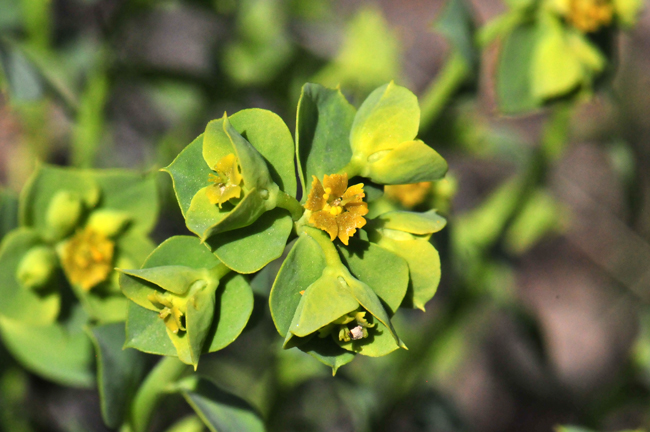
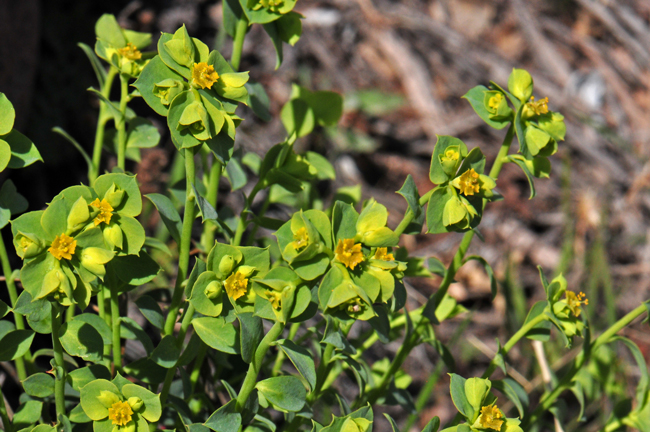
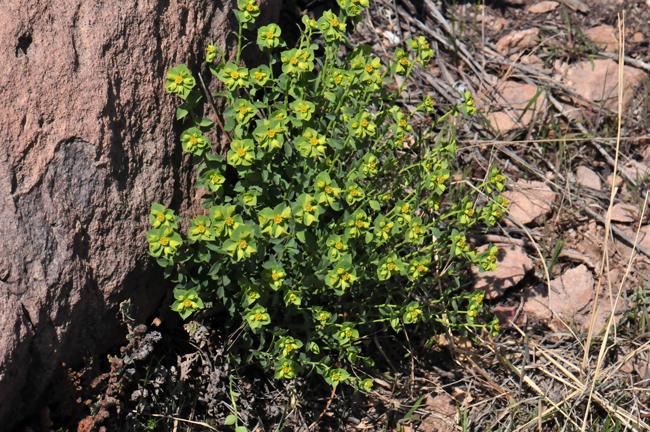
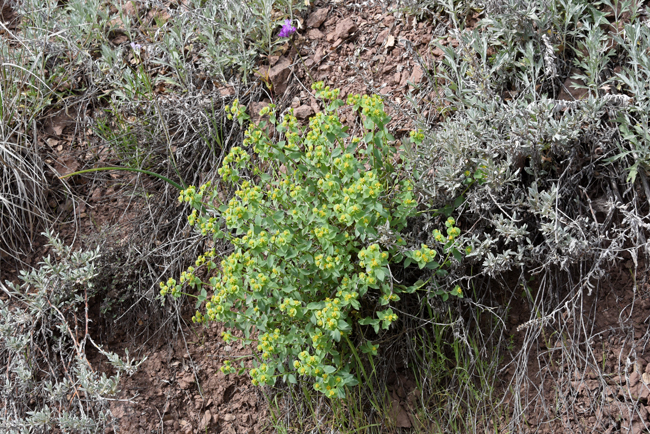
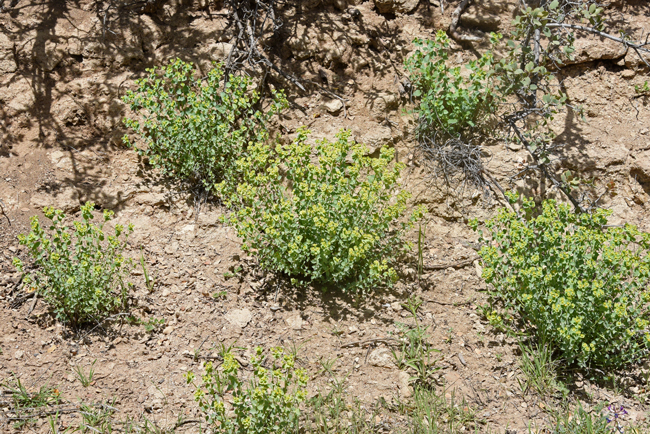
Scientific Name: Euphorbia incisa
Common Name: Mojave spurge
Also Called:
Family: Euphorbiaceae, Spurge or Euphorbia Family
Synonyms: (Euphorbia schizoloba, Euphorbia incisa var. incisa, Euphorbia incisa var. mollis, Tithymalus incisa, Tithymalus incisa var. mollis, Tithymalus schizolobus)
Status: Native
Duration: Perennial
Size: Up to 16 inches (35 to 40 cm)
Growth Form: Forb/herb; plants glabrous or slightly pubescent, stems purplish, many, erect to ascending or decumbent.
Leaves: Green alternate, usually sessile or with a short petiole (sub-sessile, blade shape variable, elliptical, to ovate, obovate or oblanceolate, margins entire, leaf tips rounded or pointed, highest leaves whorled.
Flower Color: Green; flowers monecious, in umbel-like cluster from leaf axils in whorled leaves, "flowers" modified into a cyathium in leafy bracts; fruit an oblong lobed capsule.
Flowering Season: February to August; March to May in California.
Elevation: 3,000-9,000 feet (900 - 2743 m);
Habitat Preferences: Rocky or sandy slopes; upper elevations, shady riparian areas; desert transitions and beyond.
Recorded Range: In North America Euphorbia incisa is found in the southwestern United States in AZ, CA, CO, NM and NV.
North America & US County Distribution Map for Euphorbia incisa.
U.S. Weed Information: No information available.
Invasive/Noxious Weed Information: No information available.
Wetland Indicator: No information available.
Threatened/Endangered Information: No information available.
In the Southwestern United States: Arizona has 21 species of genus Euphorbia, California has 25 species, Nevada has 6 species, New Mexico has 22 species, Texas has 31 species, Utah has 12 species. All data is approximate and subject to taxonomic changes.
Comments: The Arizona type species is from Cerbat Mountains, Mohave County (Newberry in 1858) Euphorbia incisa, Mojave spurge. The synonym E. schizoloba is disputed to be a separate species.
The genus Euphorbia is large with more than 2,000 species worldwide. In the southwest there are about 30 species or so. As with many species of Euphorbia, this species releases a milky sap of white latex which is toxic.
In Southwest Desert Flora also see Euphorbia eriantha, Beetle Spurge, Euphorbia heterophylla, Mexican Fireplant and Euphorbia radians, Sun Spurge.
See complete listing of ethno-botanical uses at Native American Ethnobotany, University of Michigan, Dearborn.

